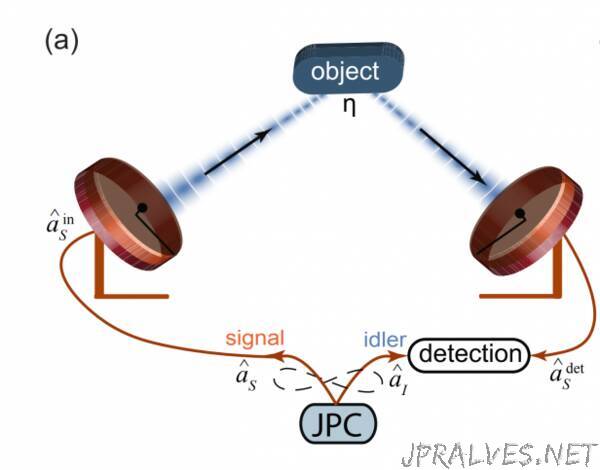
“A radar device that relies on entangled photons works at such low power that it can hide behind background noise, making it useful for biomedical and security applications.
One of the advantages of the quantum revolution is the ability to sense the world in a new way. The general idea is to use the special properties of quantum mechanics to make measurements or produce images that are otherwise impossible.
Much of this work is done with photons. But as far as the electromagnetic spectrum is concerned, the quantum revolution has been a little one-sided. Almost all the advances in quantum computing, cryptography, teleportation, and so on have involved visible or near-visible light.
Today that changes thanks to the work of Shabir Barzanjeh at the Institute of Science and Technology Austria and a few colleagues. This team has used entangled microwaves to create the world’s first quantum radar. Their device, which can detect objects at a distance using only a few photons, raises the prospect of stealthy radar systems that emit little detectable electromagnetic radiation.
The device is simple in essence. The researchers create pairs of entangled microwave photons using a superconducting device called a Josephson parametric converter. They beam the first photon, called the signal photon, toward the object of interest and listen for the reflection.
In the meantime, they store the second photon, called the idler photon. When the reflection arrives, it interferes with this idler photon, creating a signature that reveals how far the signal photon has traveled. Voila—quantum radar!
This technique has some important advantages over conventional radar. Ordinary radar works in a similar way but fails at low power levels that involve small numbers of microwave photons. That’s because hot objects in the environment emit microwaves of their own.
In a room temperature environment, this amounts to a background of around 1,000 microwave photons at any instant, and these overwhelm the returning echo. This is why radar systems use powerful transmitters.
Entangled photons overcome this problem. The signal and idler photons are so similar that it is easy to filter out the effects of other photons. So it becomes straightforward to detect the signal photon when it returns.
Of course, entanglement is a fragile property of the quantum world, and the process of reflection destroys it. Nevertheless, the correlation between the signal and idler photons is still strong enough to distinguish them from background noise.
This allows Barzanjeh and co to detect a room temperature object in a room temperature environment with just a handful of photons, in a way that is impossible to do with ordinary photons. “We generate entangled fields using a Josephson parametric converter at millikelvin temperatures to illuminate a room-temperature object at a distance of 1 meter in a proof of principle radar setup,” they say.
The researchers go on to compare their quantum radar with conventional systems operating with similarly low numbers of photons and say it significantly outperforms them, albeit only over relatively short distances.
That’s interesting work revealing the significant potential of quantum radar and a first application of microwave-based entanglement. But it also shows the potential application of quantum illumination more generally.
A big advantage is the low levels of electromagnetic radiation required. “Our experiment shows the potential as a non-invasive scanning method for biomedical applications, e.g., for imaging of human tissues or non-destructive rotational spectroscopy of proteins,” say Barzanjeh and co.
Then there is the obvious application as a stealthy radar that is difficult for adversaries to detect over background noise. The researchers say it could be useful for short-range low-power radar for security applications in closed and populated environments.”
